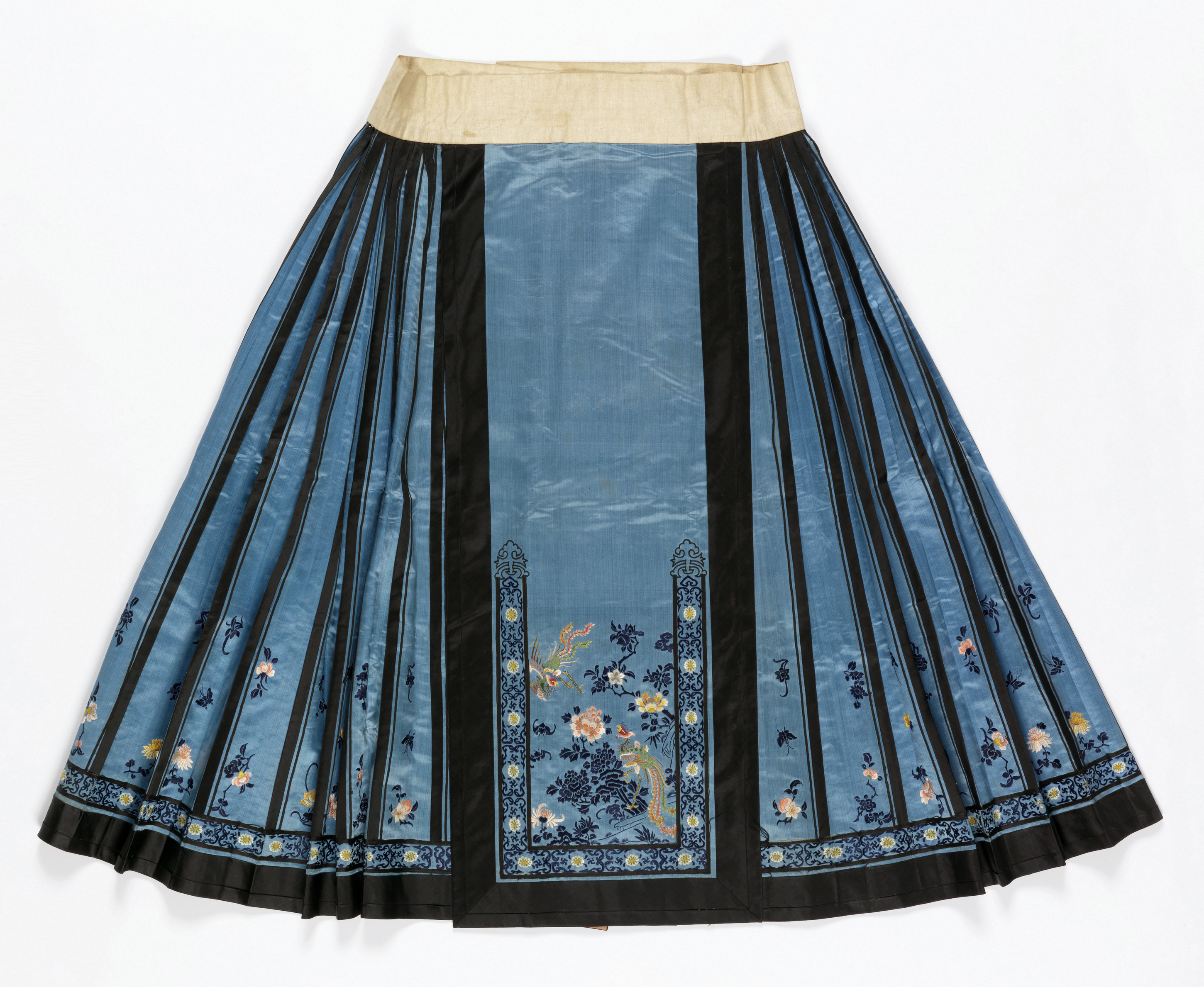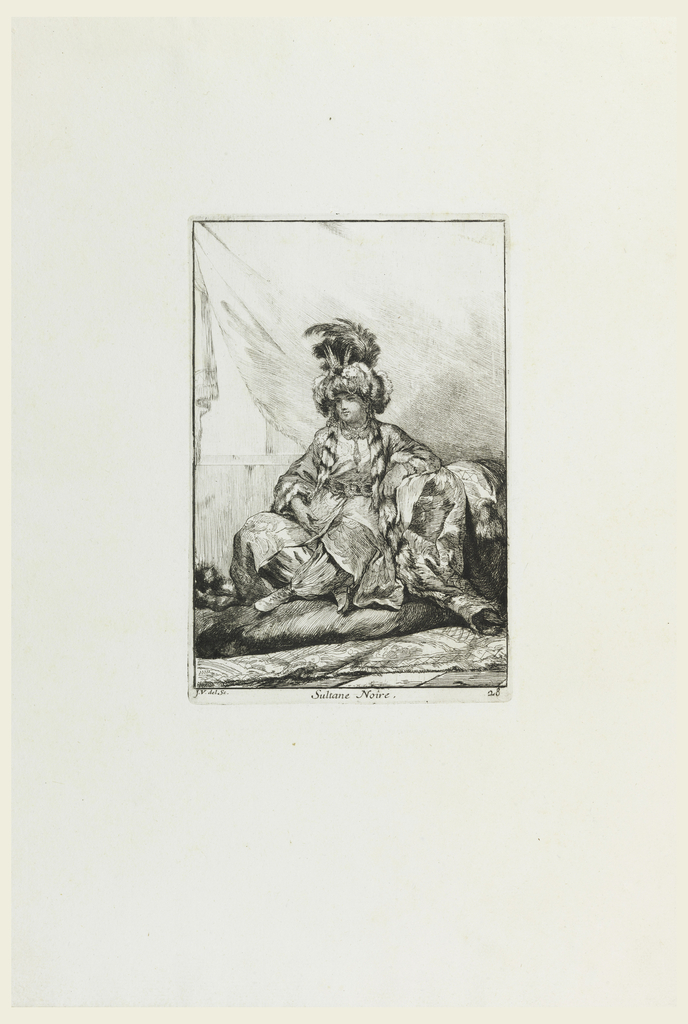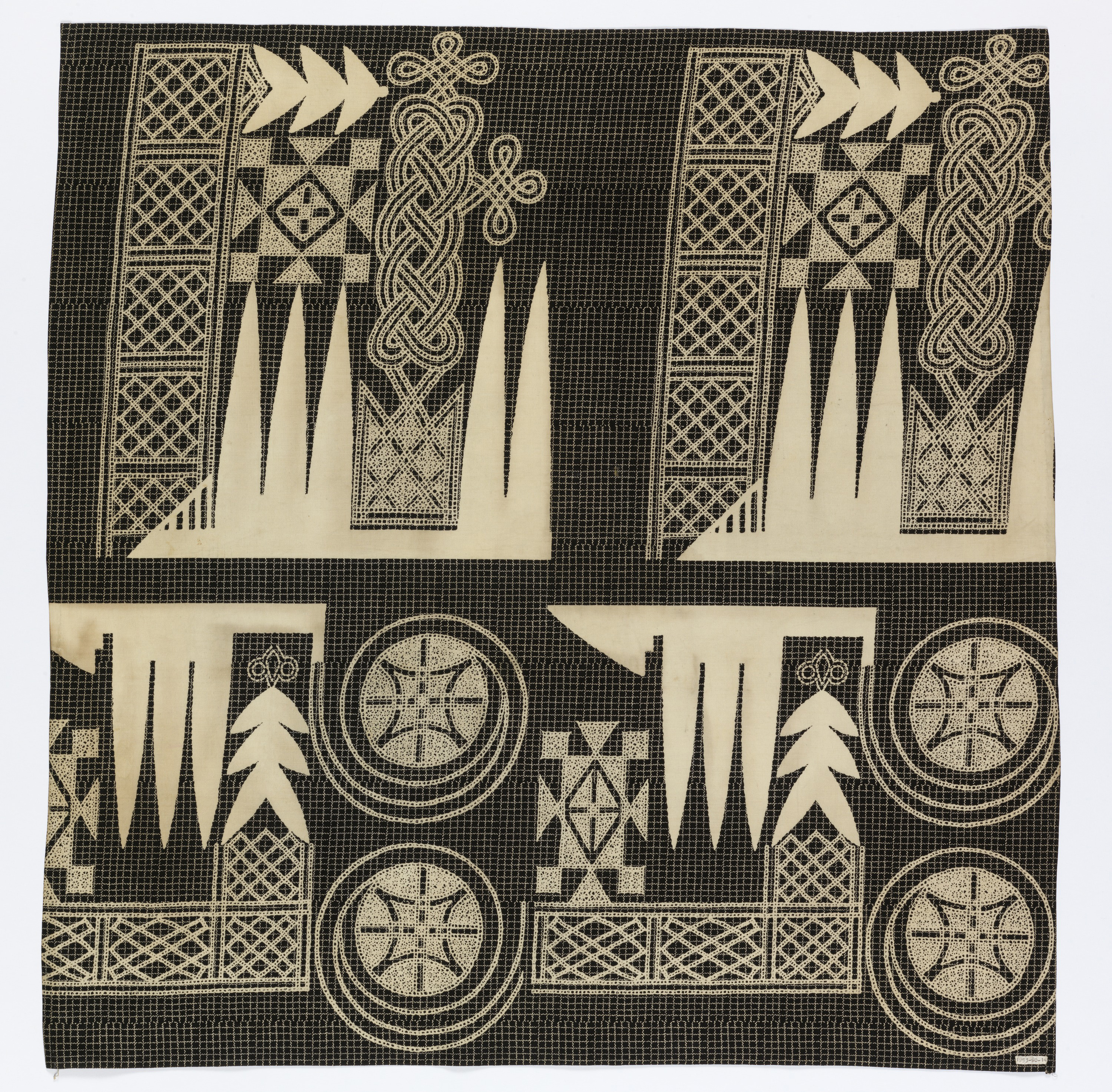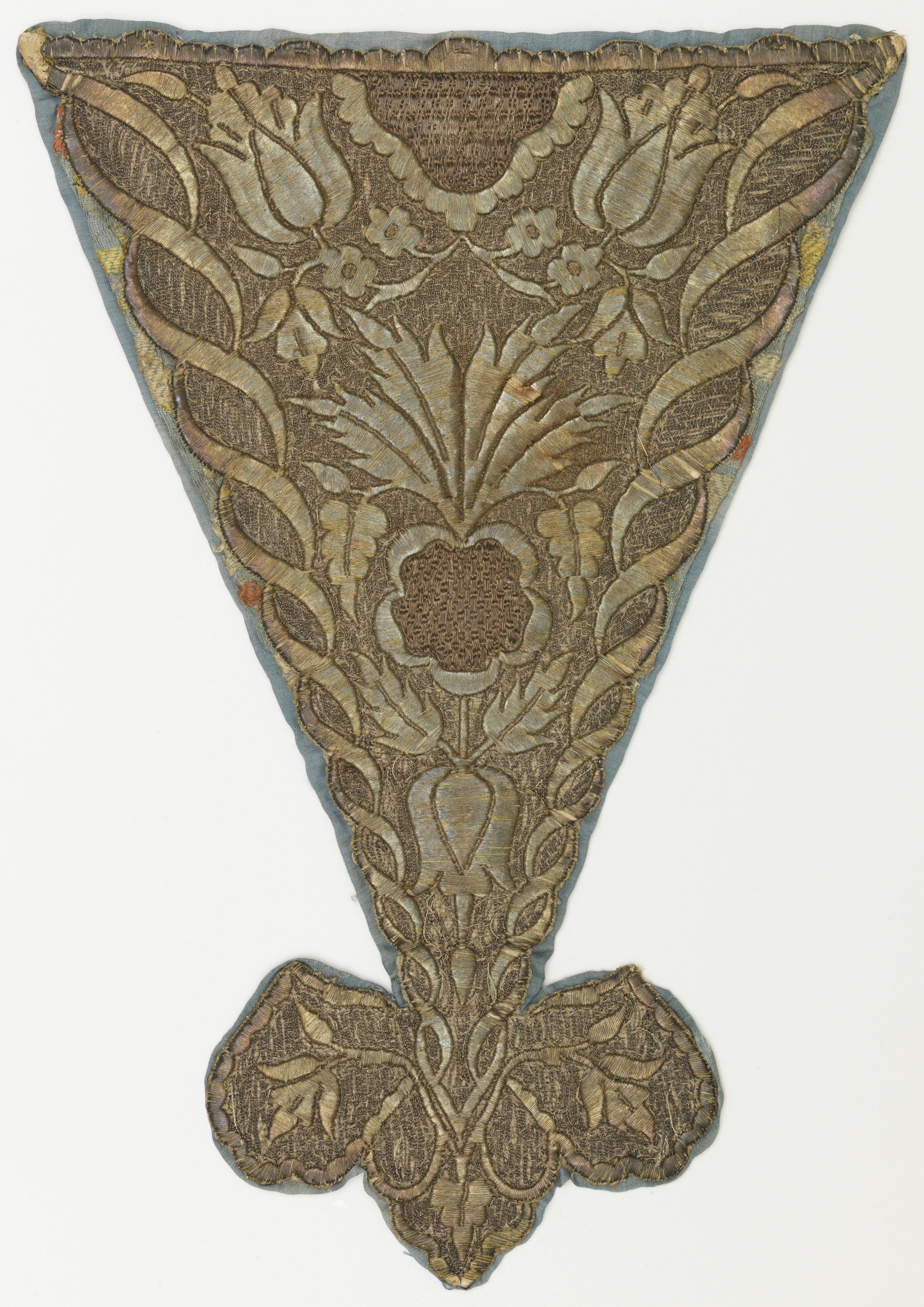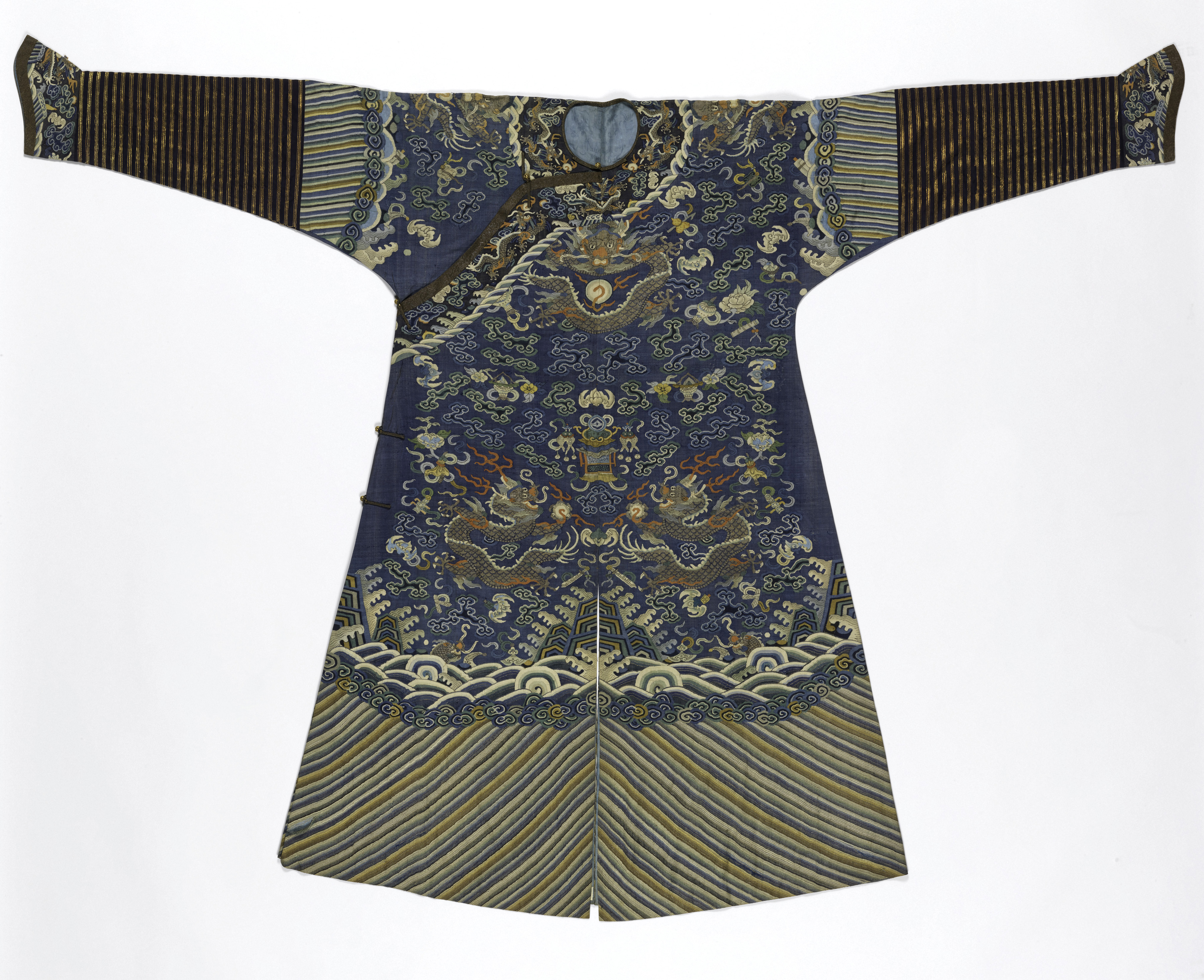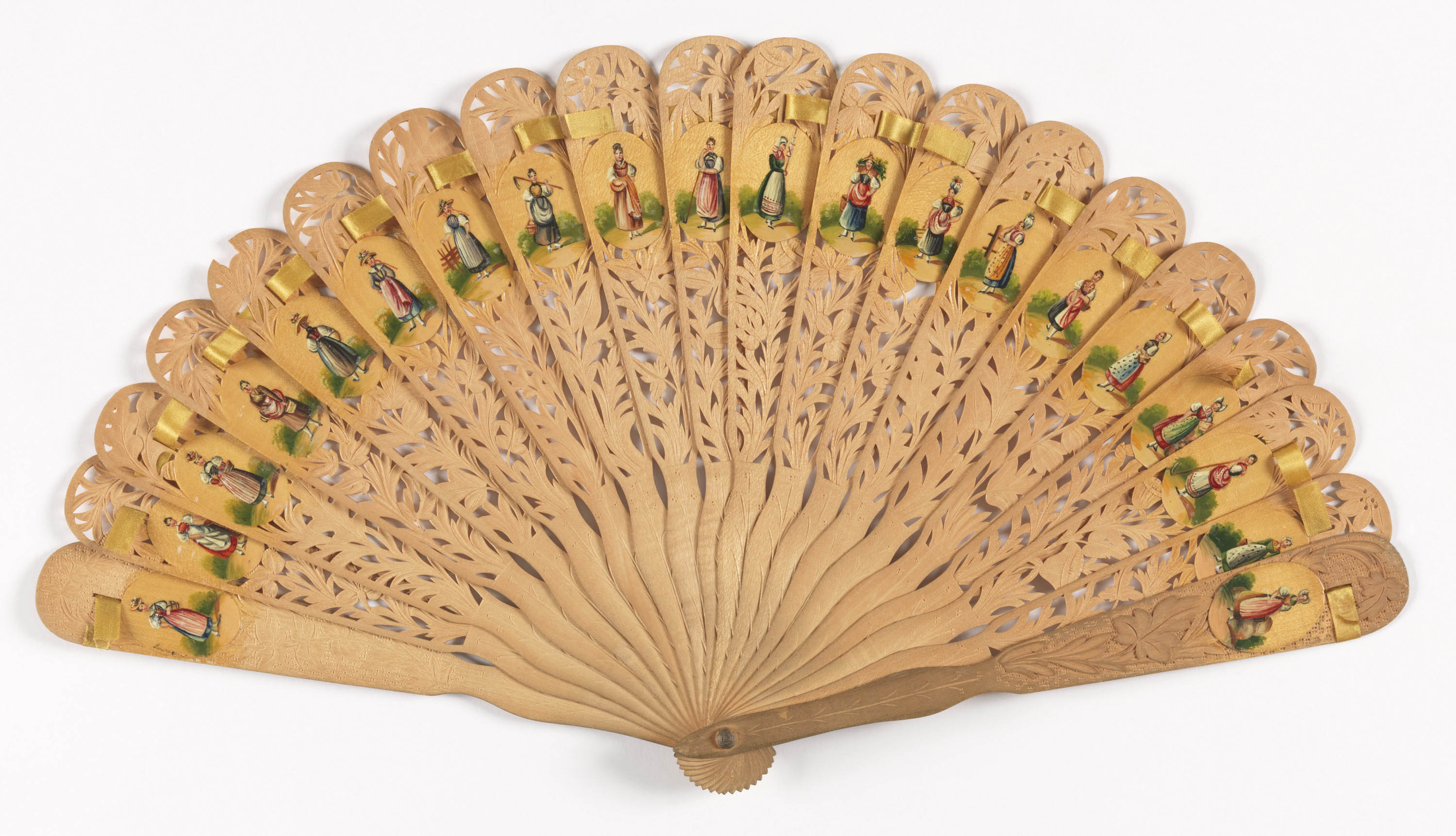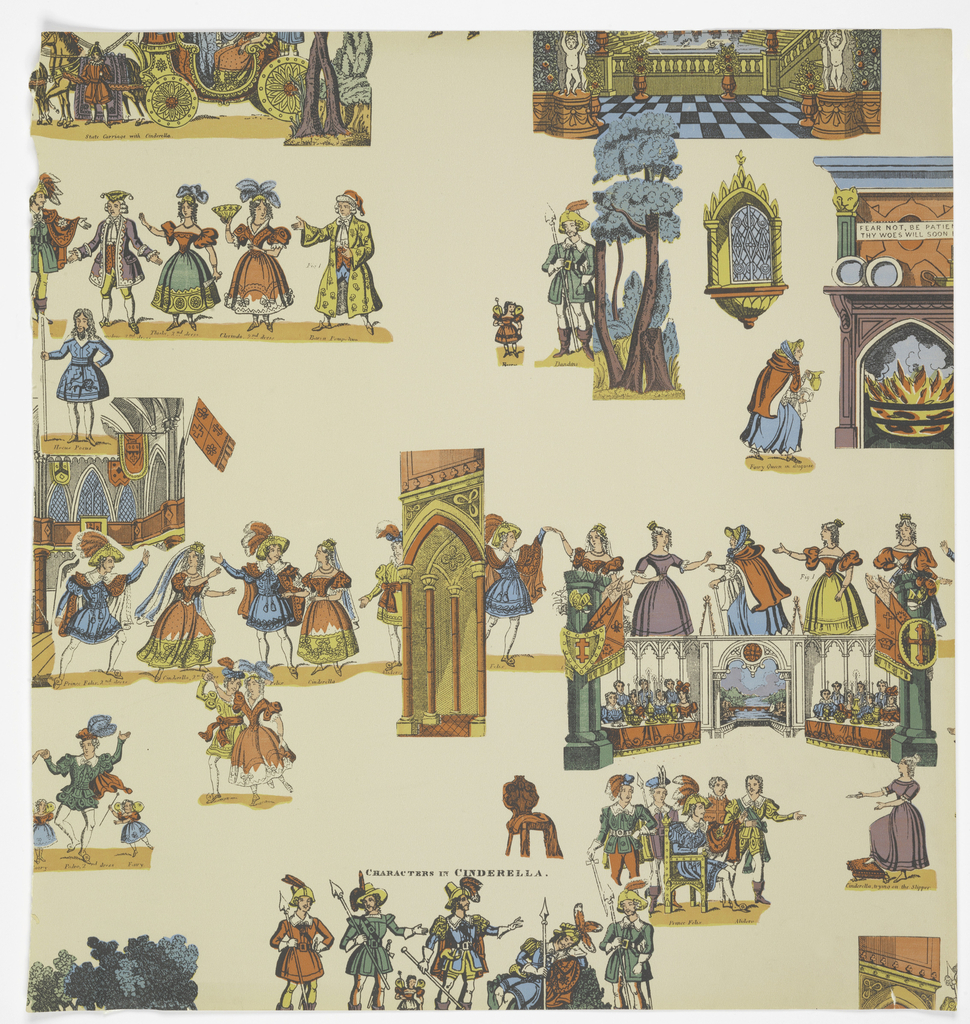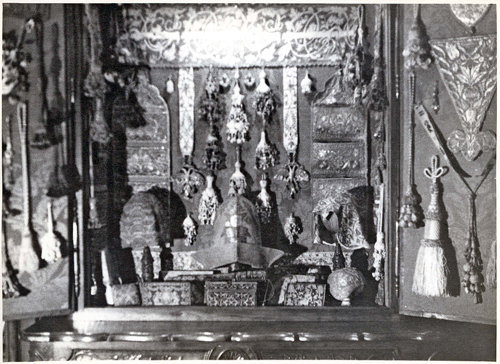Chinese skirt styles are often called aprons and are typically comprised of two identical sections, each with a decorated panel, a side panel and a pleated or gored panel. They were worn overlapping, wrapped around the body and secured through fabric loops and knotted buttons. The sections were attached to a wide waistband, usually made...
In preparation for the festivities of Carnival in 1748, a group of students at the French Academy in Rome conspired to dress collectively as Turkish men traveling in a sultan’s caravan to Mecca. The pensionnaires crafted homemade costumes, painting linen to resemble sumptuous brocades and hanging oversized turbans with faux pearls and feathers. Their fantastic...
This fabric, printed in Manchester, England for the African market, has a design which imitates the embroidered gowns worn by Hausa men in Nigera. The design of the embroideries is believed to have been influenced by men who learned the art of calligraphy from studying the Qur’an, and reflect an identification with Islam. They are...
The stomacher was a necessary element of a woman’s daily wardrobe in the eighteenth century. Often elaborately decorated with embroidery, ribbon bows, and metal threads, the triangular shaped accessory covered the open front of the robe à la française. As the fundamental style of dress during this period, these gowns were characterized by their front...
Dragon robes were worn as court dress during the Liao (901-1125), Ming (1368-1644) and Qing (1644-1911) dynasties in China, with embroidered iconography used to symbolize the emperor’s dominion over land and sea. Common elements include waves, forming a wide band at the bottom of the robe, mountains in the central plane, and clouds, occupying the...
During the nineteenth century, many European nations endeavored to define their cultural identities and to establish national histories. This romantic nationalism was characterized by a nostalgia that fueled an interest in historic folk customs. Peasants were commonly viewed as synonymous with nationhood and peasant costumes were the subject of interest and national pride. This fan,...
Cinderella is one of the most beloved children’s stories of all time and has been illustrated on wallpaper by numerous designers. This rendition was created by Ilonka Karasz, designer, illustrator, and one of the premiere women industrial designers. Ilonka began designing wallpaper in 1948 and worked almost exclusively for Katzenbach & Warren. As seen in...
A colorful scene plays out against a background of impressive classical columns in this handmade French paper dated to the 1820s. A musical quartet featuring a cellist, two violinists and a harpsichord player crowd atop a lush, green carpet to give an exclusive concert. Listening to the music are a regal couple seated in elegant...
Richard Cranch Greenleaf (1887–1961) was a prolific collector of lace, costume, and textiles. To a large extent, the strength of Cooper-Hewitt’s collection in these areas can be attributed to his generosity. Starting in 1950, Greenleaf began donating groups of lace, small accessories such as purses and coifs, and finely woven European silks and embroidered textiles....
